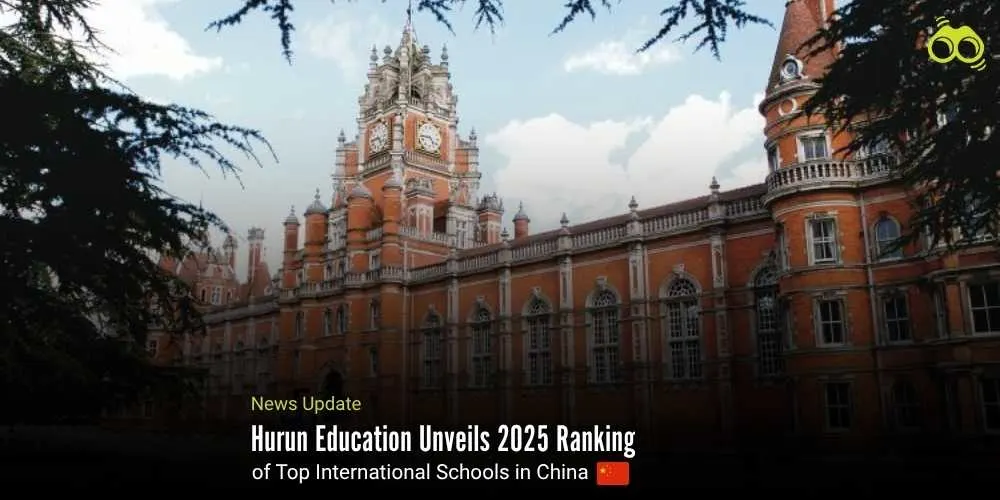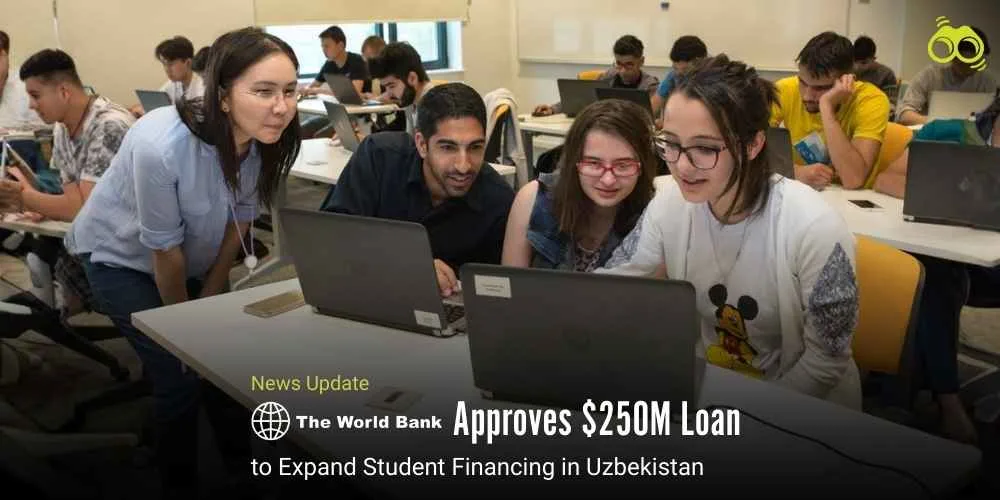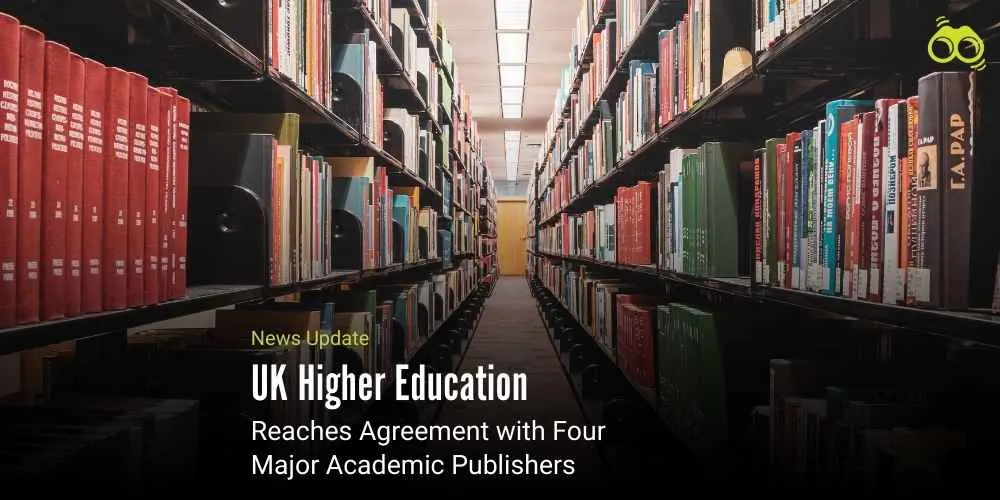Hurun Education Highlights Growth in Overseas Study and International Schooling
Top 100 International Schools in China Announced by Hurun Education
Hurun Education, the education division of Hurun Inc., has released the Hurun Education Top International Schools in China 2025, marking the seventh edition of this influential annual ranking. Divided into two key categories, the Top 100 International Schools in China and the Top 30 International Schools Open to Non-Chinese Passport Holders Only, the list serves as a vital reference for families, educators, and university admissions officers seeking insights into China’s international education landscape.
Established in 2008 with its Best of British Education guide, Hurun Education initially targeted Chinese parents considering overseas schooling for their children. Over time, its publications expanded to include guides for the United States, Canada, Australia, and Singapore. The division is now best known for its flagship Hurun Education Global High Schools List, launched in partnership with HSBC in 2023, and the China International Schools List, which has been published since 2017. Additional rankings include universities attended by alumni of the Hurun Rich List, as well as notable education entrepreneurs and donors.
Hurun Inc., founded in the United Kingdom in 1999, is a research and media group recognised globally for its influential rankings, including the Hurun Rich List, the Global Unicorns Index, and the Hurun Uth Awards for young entrepreneurs. Through data-driven insights and annual evaluations, its education division continues to shape and inform the international school sector in China.
According to the 2025 report, there are 972 accredited international schools in mainland China, of which 157 are open exclusively to non-Chinese passport holders and 555 are privately operated. The rankings were primarily determined by peer review, which accounted for 80% of the total score, down from 90% the previous year, while graduate university destinations and co-curricular offerings comprised the remaining 20%, reflecting a shift toward more holistic evaluation. The report also highlighted that nearly 900,000 Chinese students are studying abroad, with the largest groups located in the United States (280,000+), Australia (170,000), the United Kingdom (160,000), Canada (100,000), and Southeast Asia, particularly Singapore (100,000+). Among them, nearly two-thirds are enrolled in postgraduate or doctoral programmes, 30% in undergraduate study, and 5% at high school level.
Peer review data was collected from 317 senior education professionals across China, 78% of whom were from international schools and 22% from education agencies or media. Notably, 63% of participants represented schools featured in the previous year’s rankings, with each institution permitted to nominate up to two respondents. The Top 100 schools, drawn from 23 cities, were on average 15 years old and enrolled around 900 students each. Meanwhile, the Top 30 list, restricted to schools serving only non-Chinese passport holders, spanned 12 cities and included schools averaging 24 years in operation and 1,100 students.
Rupert Hoogewerf, Chairman and Chief Researcher at Hurun, compared the ranking process to football’s Ballon d’Or, noting that it was shaped by expert votes from within the sector, mainly senior leaders from previously ranked schools. He emphasised that this process makes the Hurun rankings the most comprehensive and authoritative in China. The list is aimed at three key audiences: parents considering international education for their children, teachers seeking roles in top international schools, and university admissions officers reviewing student backgrounds.
Addressing the question of the best age to study abroad, the report pointed out that top-ranked schools in China offer robust local alternatives that reinforce cultural identity and family values. In terms of distribution, Shanghai and Beijing lead in the number of international schools, followed by Guangzhou, Suzhou, and Shenzhen, while Hangzhou is emerging as a new hub due to its growing tech ecosystem.
Academically, 55% of ranked schools were reported to offer two to three curriculum systems, while others follow a single-track approach, primarily A-Level or AP, with the International Baccalaureate (IB) seeing steady growth. However, the past year was described as challenging for international schools. Rising financial pressures led many families to opt for more affordable state education, while the departure of many expatriate families reduced enrolment pools.
As a result, Hong Kong and Singapore have gained favour as higher education destinations, owing to their strong global university rankings. In contrast, the U.S. has seen a decline in appeal, due to visa difficulties and high tuition costs, a trend echoed in the UK. Despite growing competition from state schools, international institutions still rely on their smaller class sizes and enriched co-curricular programmes to justify their higher fees.
The report also addressed the rising concern over artificial intelligence (AI) in education, particularly regarding its impact on students’ ability to think independently. In response, many schools are embracing the STEAM model—adding ‘Art’ to STEM,to cultivate creativity and foundational thinking skills. Schools were encouraged to deliver future-focused education capable of preparing students for the demands of the 2050s.
A small but growing number of parents are also exploring “3+1” or “2+2” undergraduate programmes, which allow students to complete part of their studies in China before transferring abroad. This model is seen as a cost-effective way to invest more in postgraduate education. Reinforcing its leadership in the sector, Hurun Education recently released the third edition of its Global High Schools ranking in collaboration with HSBC. This was followed by a series of events in Shanghai, Beijing, and Guangzhou, attended by 2,000 parents and 12 school heads, including leaders from five of the 16 Chinese schools featured in the 2025 list. The press release concluded by directing readers to the full Chinese-language version available on www.hurun.net.In essence, the 2025 rankings reflect both the challenges and evolving opportunities within China’s international education landscape, highlighting institutions that continue to raise the bar amid global change.
Editor’s Note:
The 2025 Hurun Education Top International Schools in China ranking arrives at a critical juncture for international education in the region. As China’s education landscape continues to evolve amid economic pressures and shifting global dynamics, the Hurun list stands as a vital benchmark for parents, educators, and policymakers alike. It not only identifies institutions that excel in academic rigour, curriculum diversity, and global readiness, but also reflects broader social and economic shifts such as the increasing cost-consciousness among families and the changing preferences in overseas study destinations. With peer review as its foundation and growing attention to graduate outcomes and co-curricular offerings, the ranking offers a holistic view of what constitutes quality education in today’s context. However, the report also underscores pressing concerns. The financial strain on families, a shrinking expatriate population, and rising tuition fees have placed international schools under mounting scrutiny. Additionally, the impact of artificial intelligence on learning and the need for creative, future-focused education cannot be ignored. Schools must now go beyond traditional academic excellence to foster independent thinking, cultural resilience, and adaptability in their students. As the appeal of hybrid models such as “3+1” or “2+2” grows, institutions would do well to reimagine their programmes to remain accessible and globally relevant.
Skoobuzz believes that the future of international education in China should be built on principles of transparency, innovation, and inclusivity.














0 Comments (Please Login To Continue)